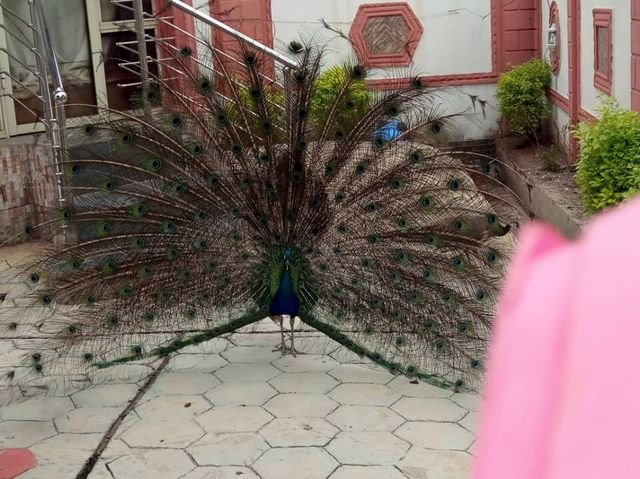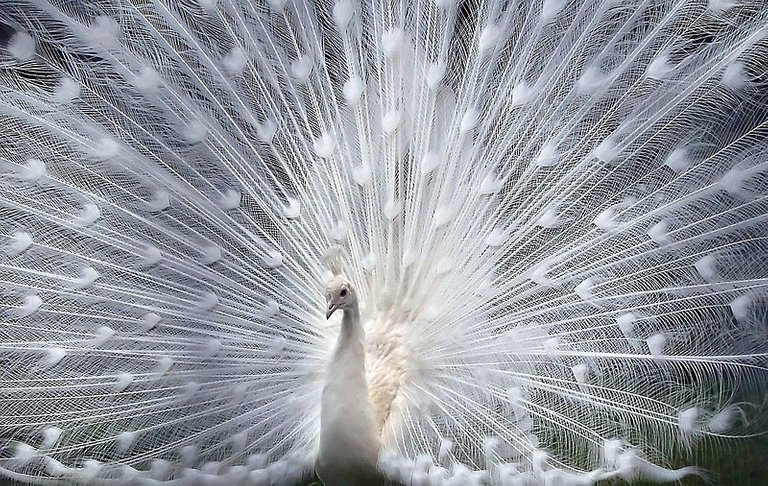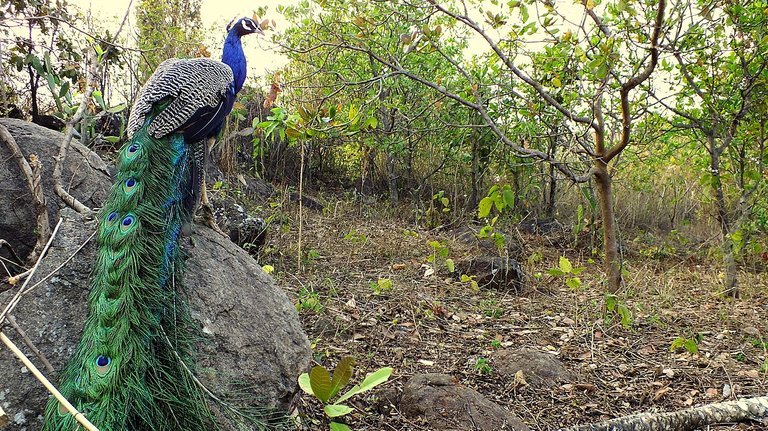There is a popular simile in my language that emphasizes the extent of pride in a person. When the Yoruba people say someone is as proud as the peacock, it simply means that such a person has a huge magnitude of pride in him/her. Now, one begins to wonder why the use of the peacock and not any other bird. The reason is not far-fetched.
I was reminded of the popular saying when I came across a sight to behold during one of my moving around within the vicinity of the town. It was an image of a peacock in its full regalia of beauty. I took a shot and the result is below.

Merely looking at the bird, the first thing that comes to mind is definitely not pride, but beauty. The peacock represents the male version of the peafowl, the alternate sex being peahen. The animal represents one of the species in the Pavo and Afropavo Genera> There are three species in the genera, namely;
- Pavo cristatus commonly known as the Indian peafowl,
- Pavo muticus commonly known as Javanese peafowl, and
- Afropavo congensis commonly known as the Congo peacock
One important thing about this bird is that the beautiful display of feather is a feature that is exclusive to the male peafowl and represents one of the ways of calling the peahen for mating. In other words, it is a form of courtship behaviour that is exclusive to the male, not that the plumage is always in a state of constant display as shown in the image.
An alternate view about the flagrant display of plumage, however, does exist. While the popular assertion remains that it is a mate-calling signal, a view that is principally championed by Charles Darwin, the opposing argument held by an Israeli Evolution Biologist - Amotz Zahavi - is that the attribute represents a form of fitness of the peacocks over each other. Whichever one is true, though, has nothing to do with beauty the attribute adds to our environment.

The bird has been widely domesticated, that they can even be found in the wild is now largely debatable. Perhaps not in this part of the world. Maybe it is not so in other places, but the primary popular reason those that keep this bird around here give tend towards ornamental purpose. The beauty that the display of colourful feathers adds to the environment is second to none.
Because the peahen lacks the beautifying attribute of the peacock, many domesticators will only keep them for breeding purposes. A typical peacock is a polygamist in nature (most male creatures are anyway) but this characteristic can only probably be observed in the wild. During the breeding season, the peahen lays about 5 to 8 eggs preferably on a slightly depressing, or concave-shaped platform.
The eggs are incubated for about 28 days after which they are hatched. Peafowls are known to live for about 20 to 25 years on average in the wild while those domesticated in captivity have been reported to live for as long as 50 years. On average, they reach sexual maturity between 2 to 3 years of age.
Nutritionally, the birds are known to be omnivores just like we humans. However, they require more protein than usual in order to have optimal health. Those in the wild are known to often become compulsory vegetarian in the absence of meat.
Naturally, the distribution of the peafowl is kind of limited. However, due to domestication, they can now be found far and wide all over the world. Of all the three species in the two genera, only one is currently considered to be an endangered species - Pavus muticus.
Apart from adding beauty to the environment, an attribute that is peculiar to the peacock, peafowl are generally considered a good source of proteins for humans and, hence, they can be killed and eaten just like every other hen. However, it is largely recommended that the endangered species among them - Pavus muticus - be conserved as much as possible.
Is there a popular saying in your language or your country concerning the peafowl? Feel free to share with us in the comment section.
Here is an image of the peacock when he is not proud:

Thank you all for reading.
Thanks for your contribution to the STEMsocial community. Feel free to join us on discord to get to know the rest of us!
Please consider supporting our funding proposal, approving our witness (@stem.witness) or delegating to the @stemsocial account (for some ROI).
Please consider using the STEMsocial app app and including @stemsocial as a beneficiary to get a stronger support.
Hello @gentleshaid,
This is also a saying familiar to me, Proud as a Peacock. As far domestication goes, before COVID struck we used to see a peacock strutting around in front of a local bagel shop (Long Island, New York). I don't know where he came from, but the shop owner encouraged the visits by putting food out. The peacock was probably good for business :))
An interesting article. Thank you!
Thanks for the contribution @agmoore. Yes, the beautiful bird is such a beauty to behold and I am damn sure it was good for business. I would not mind having a couple of them around me as well.
Very insightful post.... I must say they have a very long life spam for a bird.. I have not seen any dog that has lived up to 20 years..
I also got to know about their long life span recently. Thanks for the audience bro.
I love peacocks, love this post! (Ever been startled by one at a zoo? They're incredibly loud!)
Not just a flamboyant, show-offy mating ritual, this display of awesome plumage?
One-upmanship, showing off, strutting your stuff - #gottalove #peacocks!
Eeep!!
This is why I keep promoting #entomophagy.
Trouble is, I couldn't eat a praying mantis (even if they weren't a protected species), any more than I could kill, pluck, and gut a peacock for dinner.
Now, crickets, grasshoppers, ants... I do love them, in moderation! ... are plentiful, and I would rather get my protein from plentiful bugs than cows, pigs, lambs, or chickens. Maybe I'm a pescatarian and didn't know it. (My mom still thinks Pescatarians are some new religious improvement over Catholicism, and if you ask her today, she'll forget that it's FISH EATERS, and yes, "mackerel snappers" used to be slang for Catholics.)
Oh the things we eat. But not peacocks, not when bugs are still plentiful!